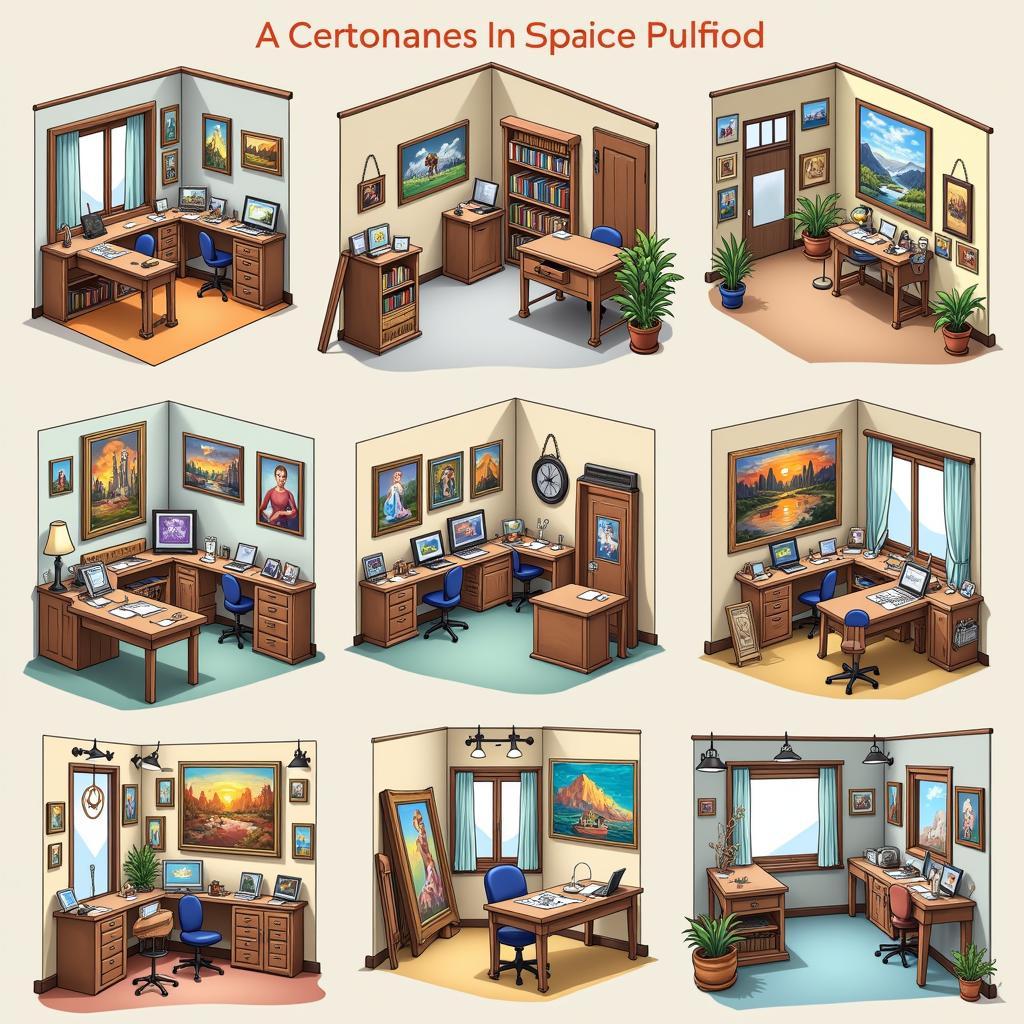The Art Studio Manager Job Description: A Masterpiece of Creativity and Management
The role of an art studio manager is a dynamic blend of artistic passion and sharp business acumen. If you thrive in creative environments and possess a knack for organization, a career as an art studio manager might be your perfect canvas. But what exactly does an art studio manager do? Let’s explore the intricacies of this multifaceted role and uncover the skills needed to excel.
What Does an Art Studio Manager Do?
 Art studio manager overseeing daily operations
Art studio manager overseeing daily operations
Imagine being the conductor of a symphony, but instead of musical instruments, you’re orchestrating the smooth operation of an art studio. You are the driving force behind the scenes, ensuring that artists have the resources they need to create, deadlines are met, and the studio flourishes both creatively and financially.
An art studio manager’s responsibilities are as diverse as the art itself, encompassing:
- Studio Administration: Managing daily operations, from ordering supplies and maintaining equipment to handling invoices and payroll.
- Project Management: Overseeing project timelines, budgets, and communication with clients or collaborators.
- Artist Relations: Supporting artists, nurturing their talent, and fostering a positive and productive studio environment.
- Marketing and Sales: Promoting the studio’s work, attracting new clients, and managing sales and exhibitions.
Essential Skills for an Art Studio Manager
 Collage of skills needed for an art studio manager
Collage of skills needed for an art studio manager
To thrive in this role, you’ll need a unique combination of hard and soft skills. These include:
1. Organizational Prowess: Exceptional organizational and time management skills are crucial for juggling multiple projects, deadlines, and artist needs.
2. Financial Acumen: A strong understanding of budgeting, financial management, and sales is essential for running a profitable studio.
3. Communication Dynamo: Excellent written and verbal communication skills are vital for liaising with artists, clients, suppliers, and the public.
4. Marketing Maestro: You’ll need to be adept at promoting the studio and its artists, utilizing both traditional and digital marketing strategies.
5. Passion for the Arts: A genuine appreciation for art and the creative process is essential for understanding and supporting the artists you work with.
“Being an art studio manager is like being a gardener,” says renowned art consultant, Eleanor Vance. “You nurture the talent around you, providing the right environment and support for creativity to blossom.”
Finding Your Canvas: Where Art Studio Managers Thrive
 Various work environments for art studio managers
Various work environments for art studio managers
Art studio managers are sought after in various settings, including:
- Independent Art Studios: Working directly with individual artists or small groups to manage their careers and creative output.
- Commercial Art Galleries: Overseeing gallery operations, exhibitions, and sales while fostering relationships with artists and collectors.
- Art Schools and Universities: Managing student galleries, coordinating exhibitions, and providing administrative support to art departments.
- Community Art Centers: Promoting arts accessibility, organizing workshops and events, and supporting local artists.
Conclusion
The role of an art studio manager is both demanding and rewarding. It offers the opportunity to combine your passion for the arts with your organizational talents to make a tangible impact on the creative world. If you possess the skills, dedication, and genuine love for art, a career as an art studio manager might be your masterpiece.
Need help navigating the art world?
Contact us!
Phone: +84 24 6257 3573
Email: danteum@gmail.com
Address: Savico Megamall, 7-9 Đ. Nguyễn Văn Linh, Gia Thụy, Long Biên, Hà Nội 10000, Việt Nam.



